At a glance
The kit contains messages and graphics public health professionals can share with their audiences, including information about stroke signs, symptoms, treatment, and F.A.S.T. response.
About this toolkit
With the support of public health and health care professionals like you, the Division for Heart Disease and Stroke Prevention (DHDSP) is better able to educate the public about the basics of stroke.
These selected messages and tools include information about stroke signs and symptoms, the importance of a F.A.S.T. response during a stroke, and stroke treatment.
Help DHDSP spread stroke awareness by sharing the tools found on these webpages. Non-Hispanic Black people have the highest rates of stroke mortality in the United States.1 We urge our partners in public health and health care to help DHDSP decrease disparities.
How to use this toolkit
- Read and incorporate evidence-based policy tools and guides into your program.
- Link to resources that highlight stroke facts, signs of stroke, and ways to prevent stroke.
- Share messages and graphics with colleagues and people in your social networks.
- Use the additional stroke resources (such as stroke maps, data, the Stroke Systems of Care Framework) to improve patient care in your state.
What's included
Stroke resources for individuals and patients
Pulse Check: Live to the Beat: Learn how people can manage their conditions, move more, eat healthier, stress less, and work with their health care team to help reduce cardiovascular disease (CVD), heart disease, and stroke.
Women and Stroke: Women have unique risk factors for stroke. Here is what they can do to reduce their risk.
Men and Stroke: Learn what puts men at risk for stroke and what steps they can take to prevent stroke.
Pregnancy and Stroke: Are You at Risk?: Read about the connection between pregnancy and stroke and what you can do to keep yourself and your baby healthy.
Spread the word
Share these social media messages with your followers. Don't forget to tag @CDCHeart_Stroke in your posts and follow us on social media.
Facebook/LinkedIn
- Don’t delay; call 9-1-1 right away if you spot the signs of stroke in yourself or someone else. Here are the 5 symptoms to look for. https://bit.ly/3LdeIQV
- Not all women are equally affected by stroke; Black women are more likely to have a stroke than any other racial or ethnic group of women in the US. Try these lifestyle changes to lower your risk. https://bit.ly/3HlUymC
- Do you know the signs and symptoms of stroke? F.A.S.T. is an easy acronym to help you remember them—and perhaps save a life. https://bit.ly/3LdeIQV
- Every minute counts when a stroke happens. Calling 9-1-1 right away can help you or a loved one get the lifesaving treatment needed to reduce the risk of death and serious disability from stroke. Learn more. https://bit.ly/3LjXTnk
X (Twitter)
- Don’t delay! Call 9-1-1 right away if you spot the signs of #stroke in yourself or someone else. @CDCHeart_Stroke shares the 5 symptoms to look for. https://bit.ly/3LaAuVo
- Not all women are equally affected by #stroke; Black women are more likely to die from a stroke than any other racial or ethnic group of women in the US. Try these lifestyle changes to lower your risk. https://bit.ly/3LD8evW
- Recognizing the signs and symptoms of a #stroke F.A.S.T. can help save lives. Here’s how. https://bit.ly/3nkGhzE
- Every 40 seconds, someone in the US has a #stroke. Learn how you can prevent a stroke or lower your risk of having one with tips from @CDCHeart_Stroke. https://bit.ly/3oSydH3
- Every minute counts when a stroke happens. Calling 9-1-1 right away can help you or a loved one get the lifesaving treatment needed to reduce the risk of brain damage. Learn more.
- Do you know the signs of #stroke? Common symptoms can include dizziness, vision trouble, and severe headache. If a stroke happens, act F.A.S.T. and call 9-1-1 right away.
Raise awareness for these health observances
Observance
Date
Hashtag
National Stroke Awareness Month
May 2024
#StrokeMonth
National EMS Week
May 19–25, 2024
#EMSWeek
World Stroke Day
October 29, 2024
#WorldStrokeDay
Stroke graphics in English and Spanish
Share these stroke graphics on your social media accounts.
F.A.S.T.
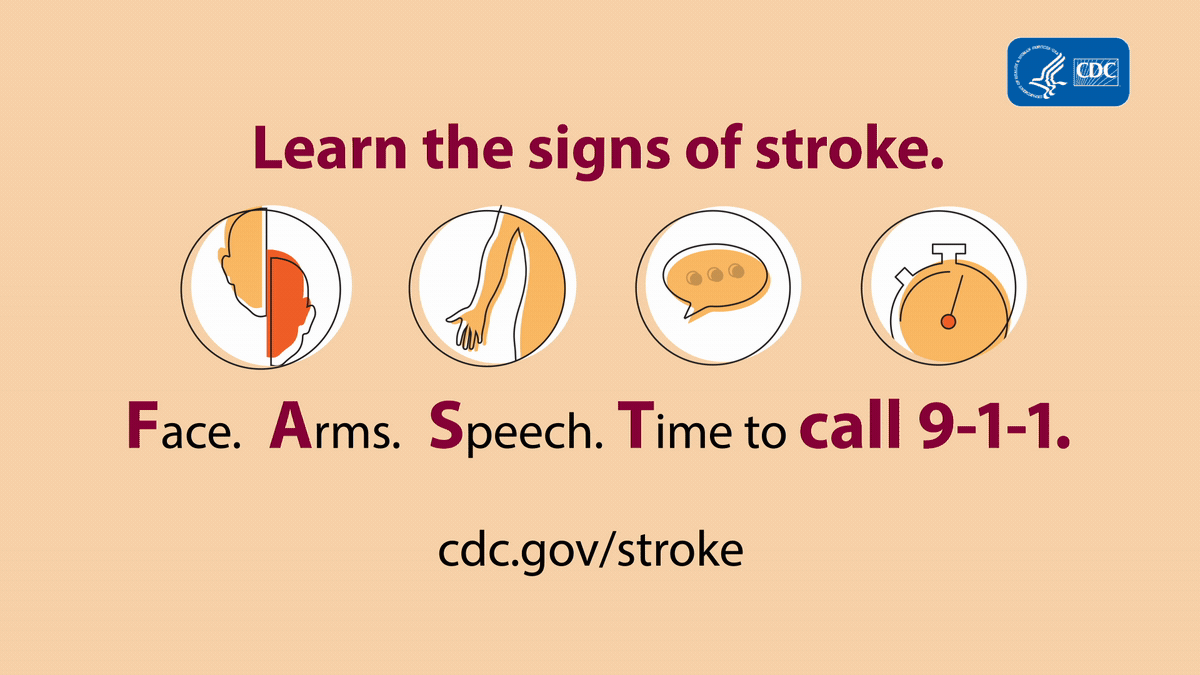
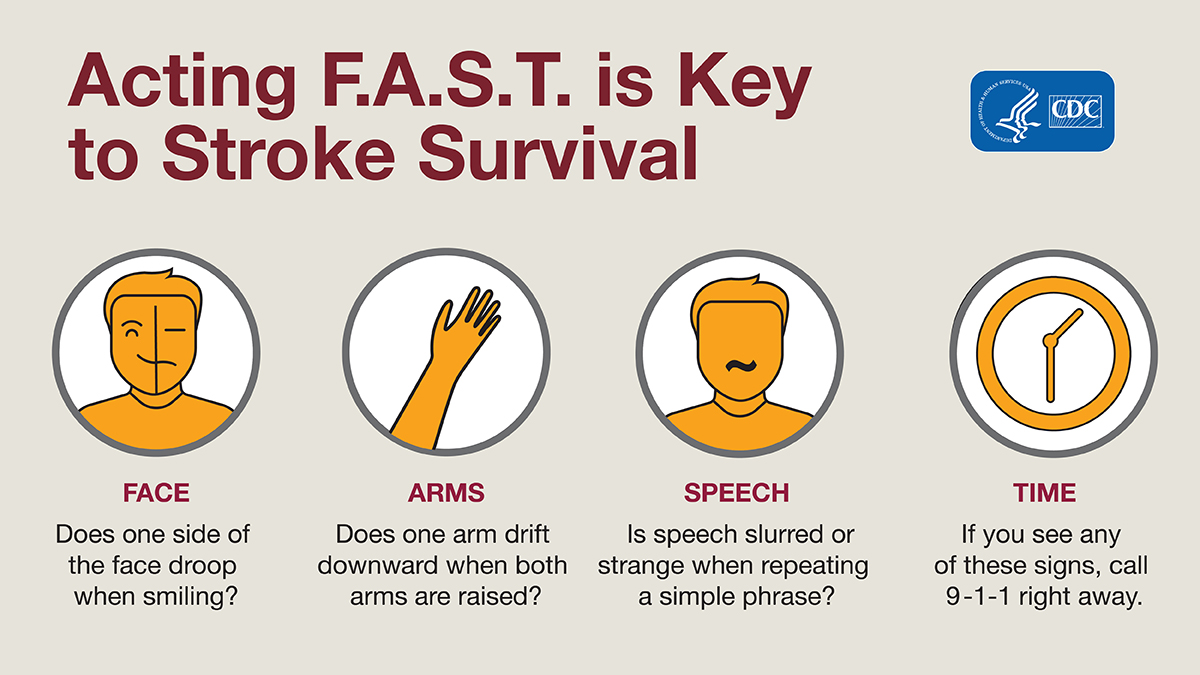
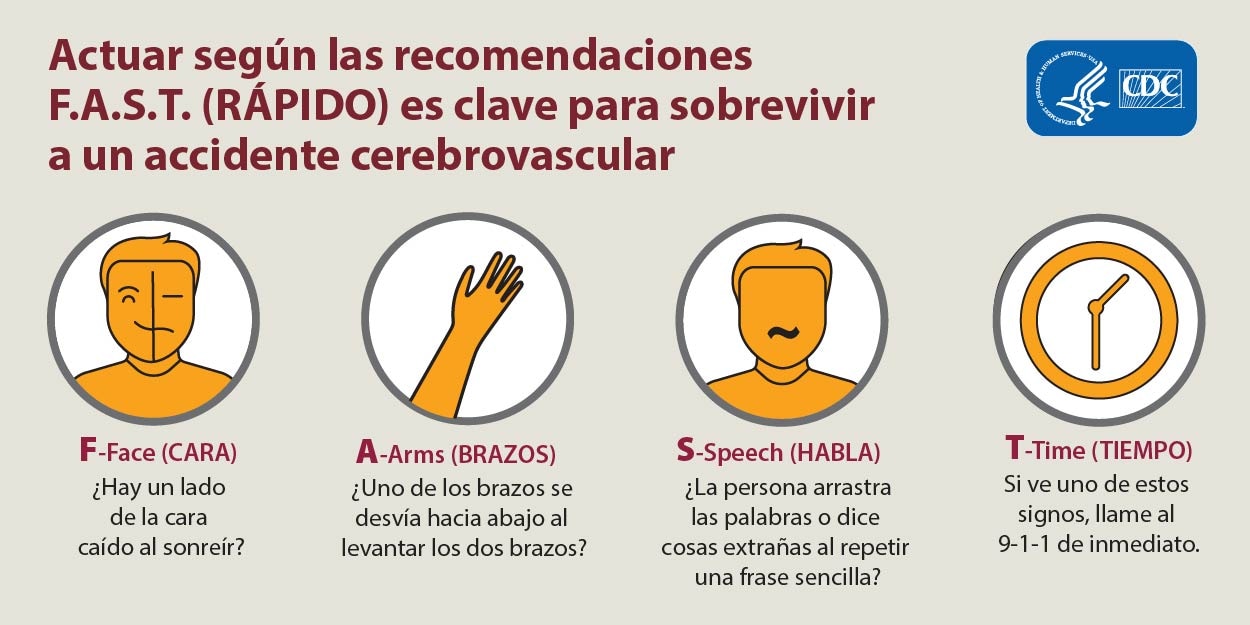
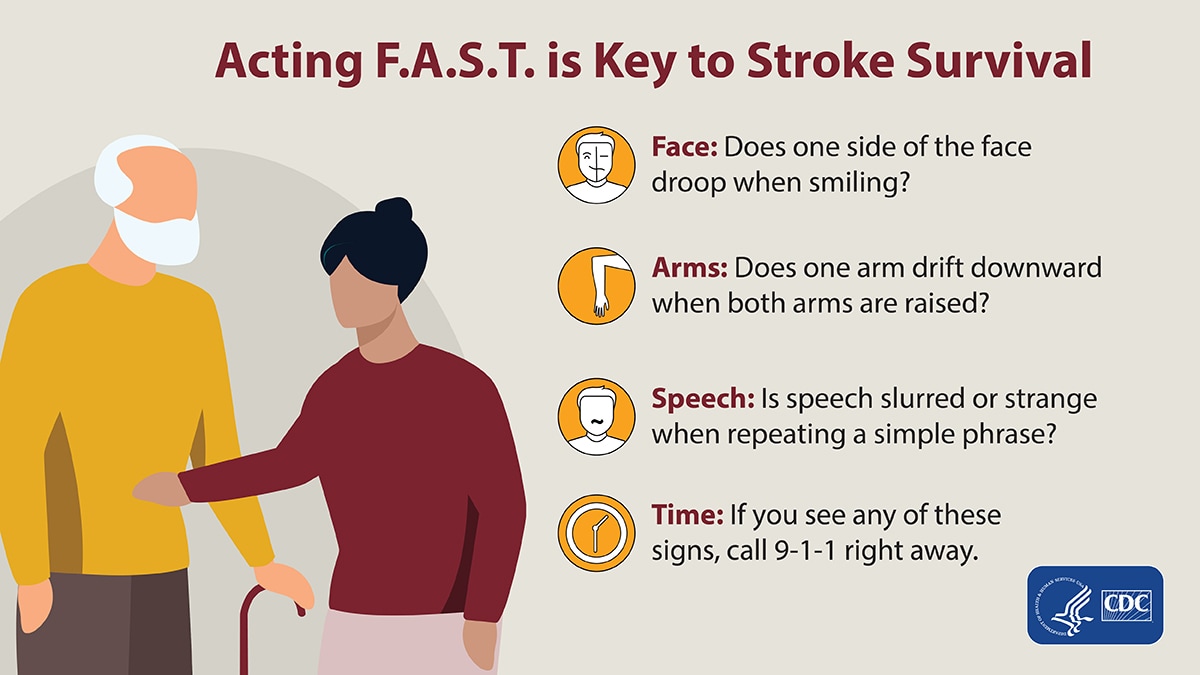
Women and stroke

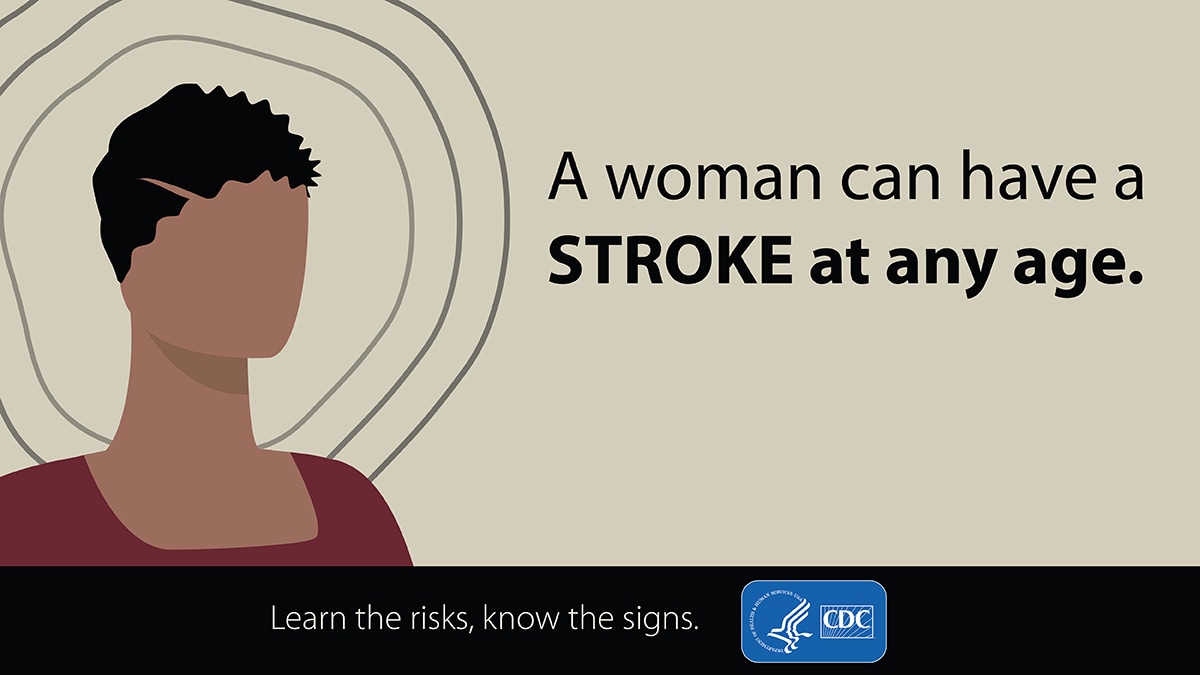
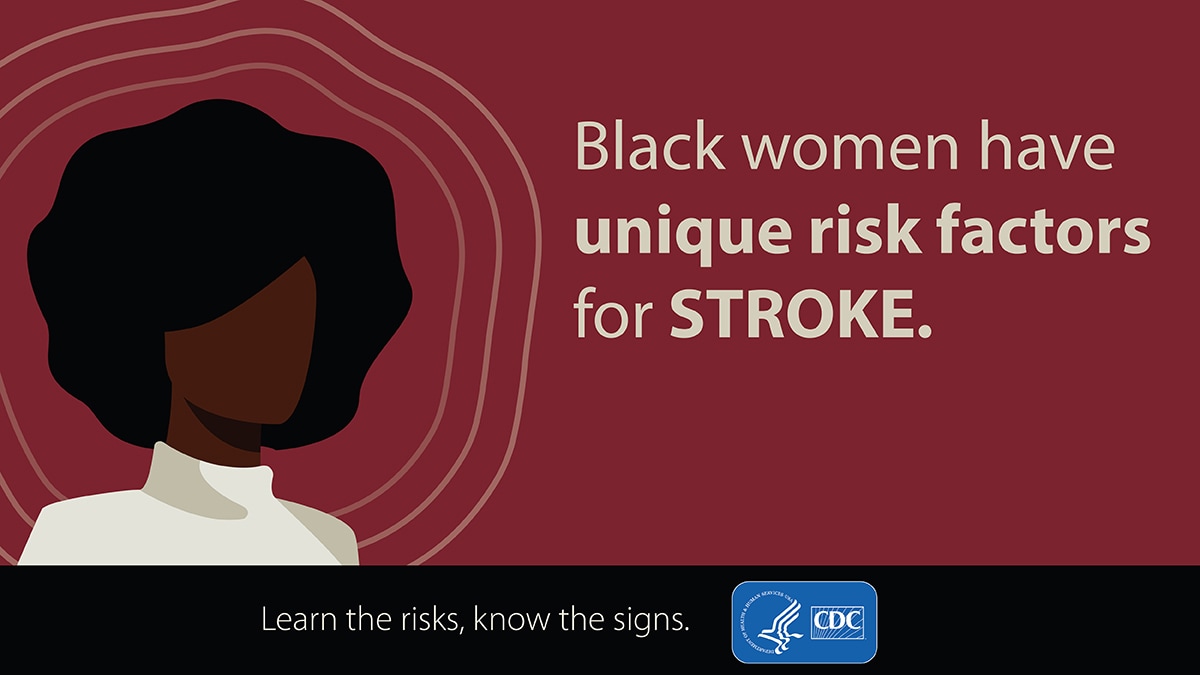
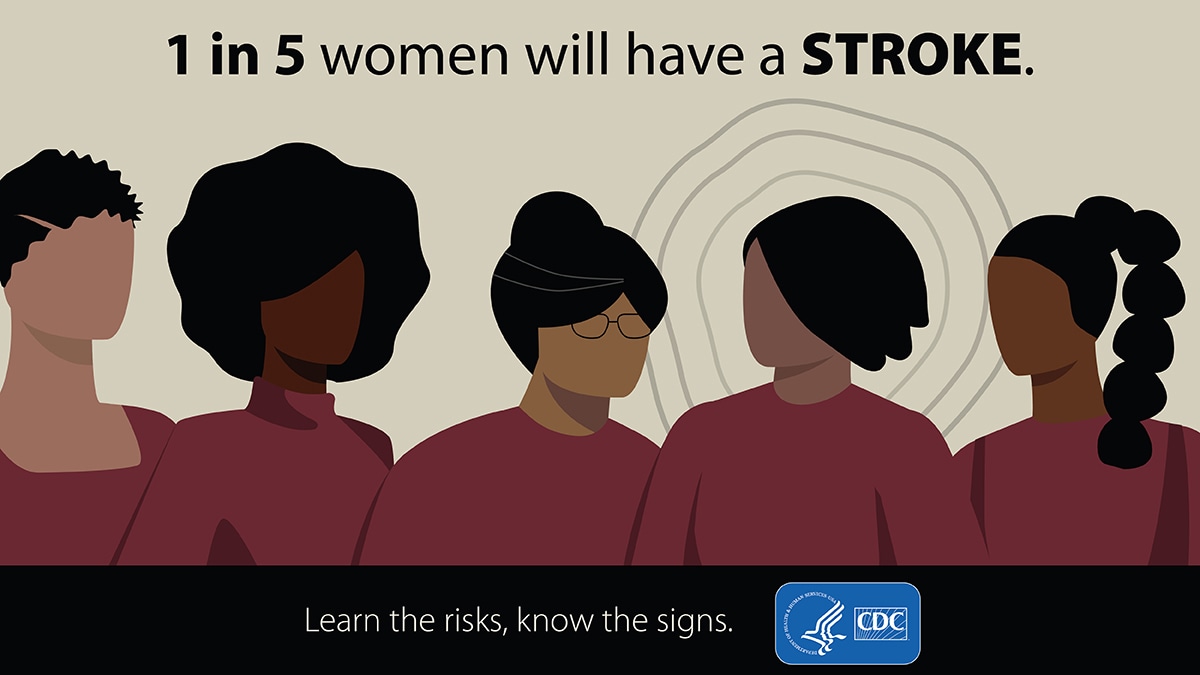
Stroke signs and symptoms
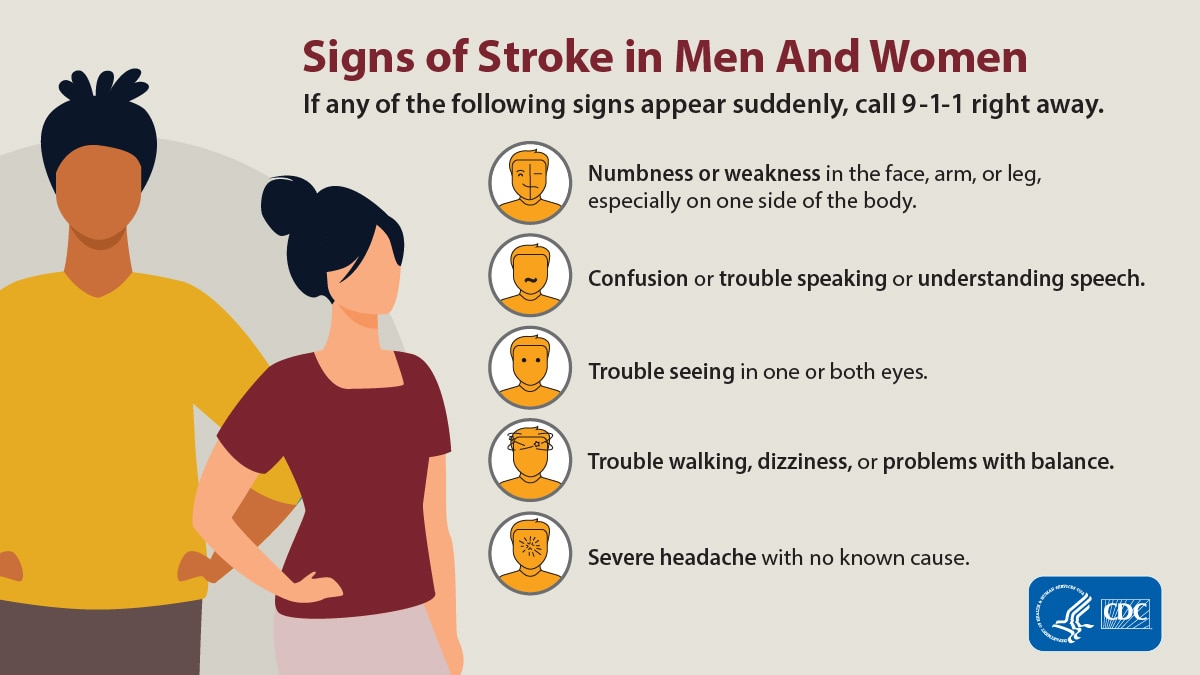
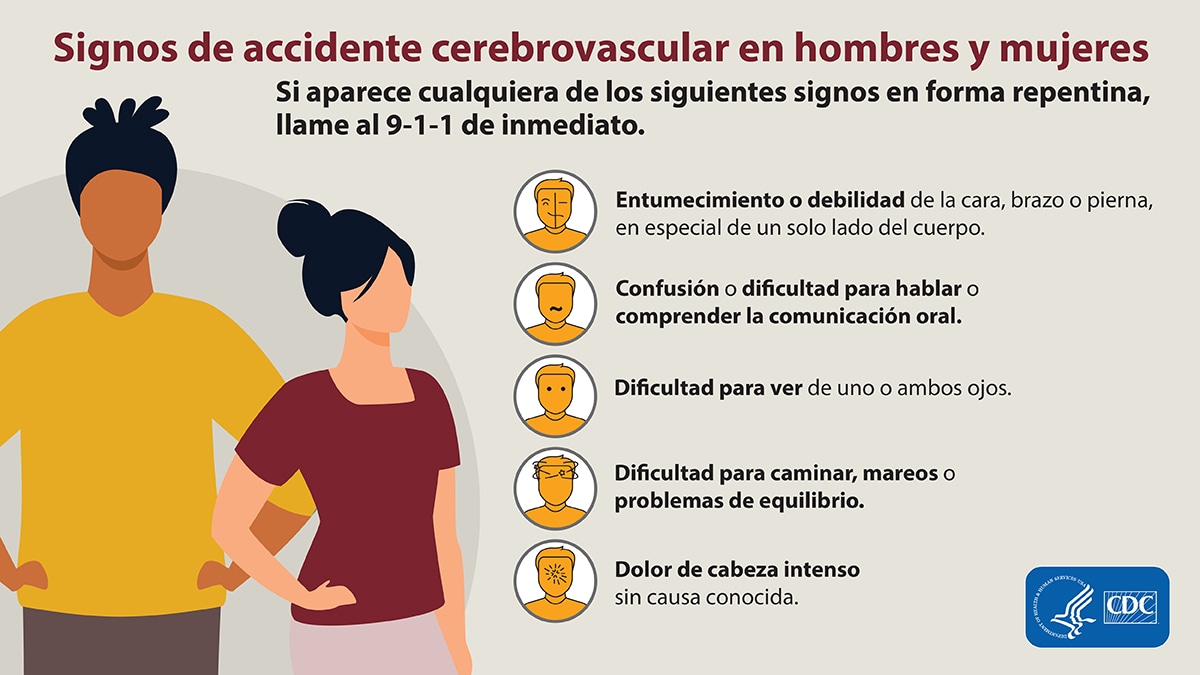
Emergency care
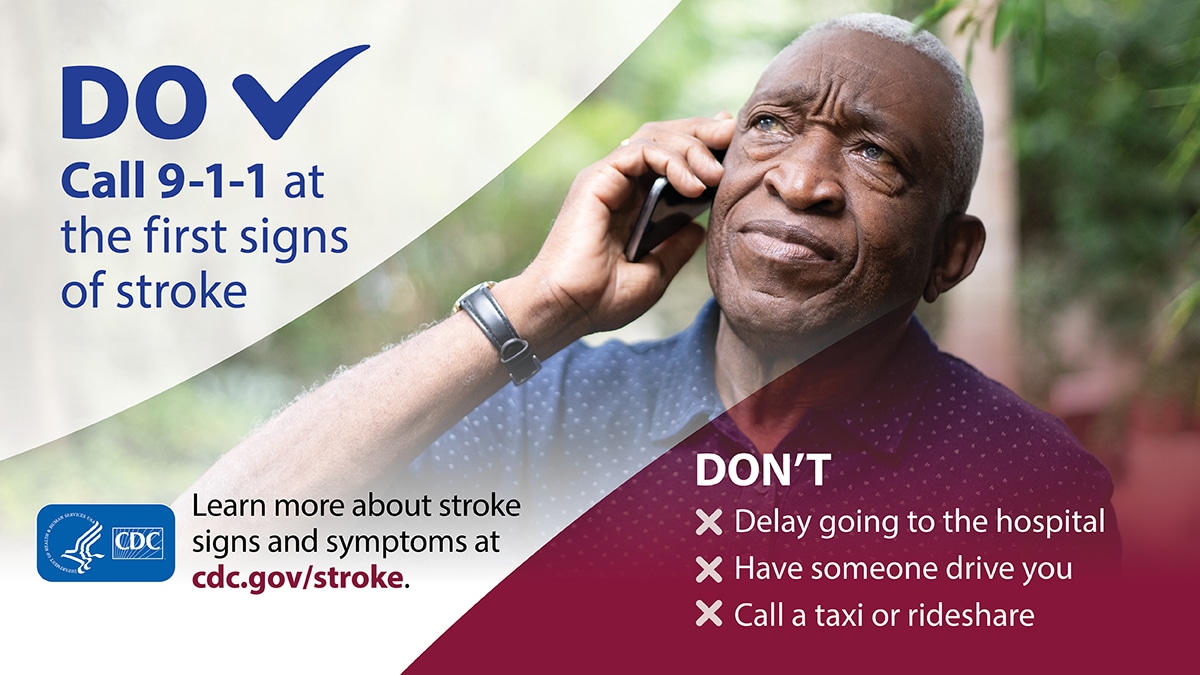
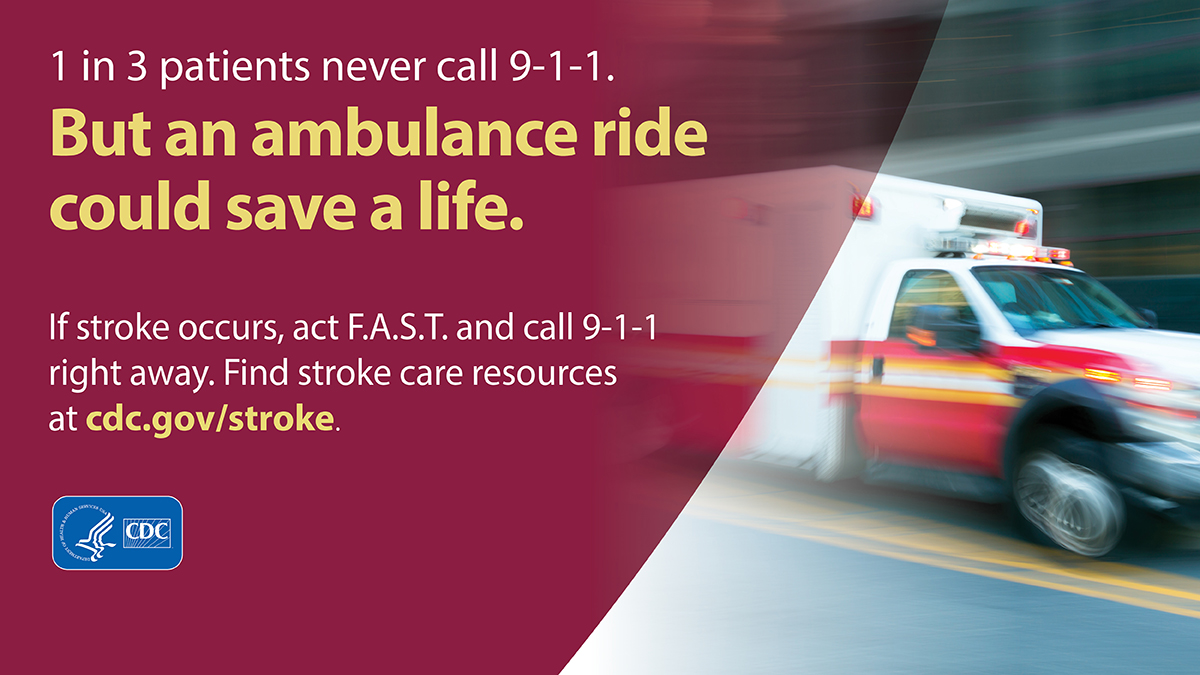
Stroke prevention
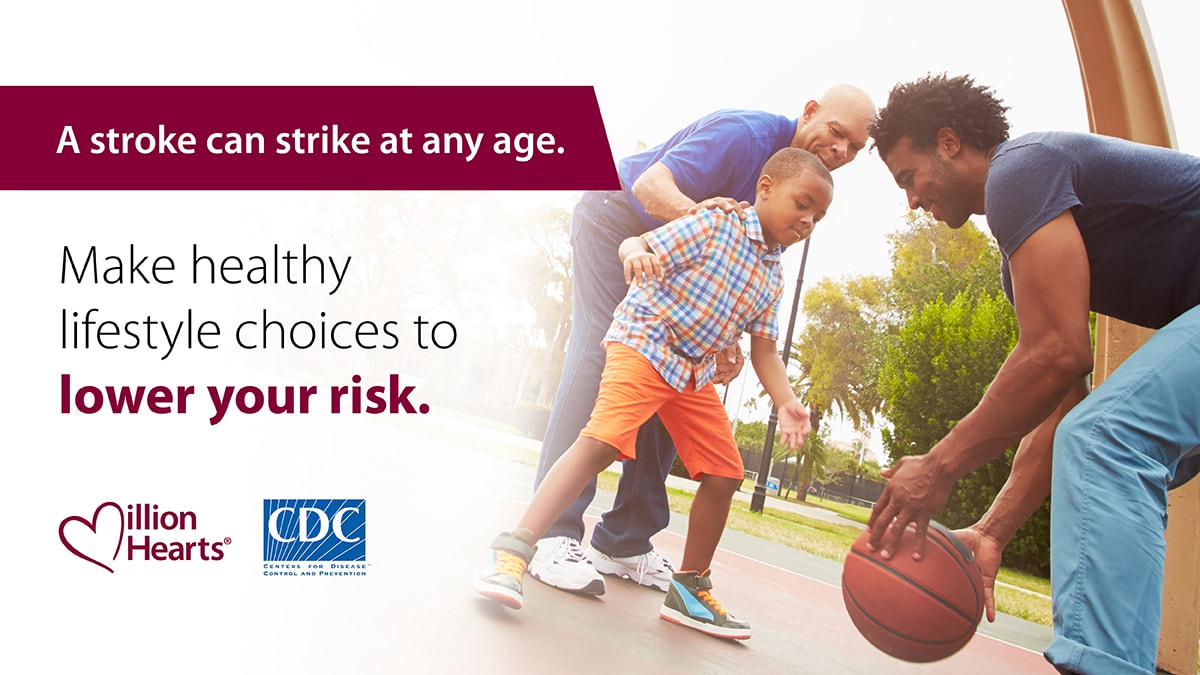
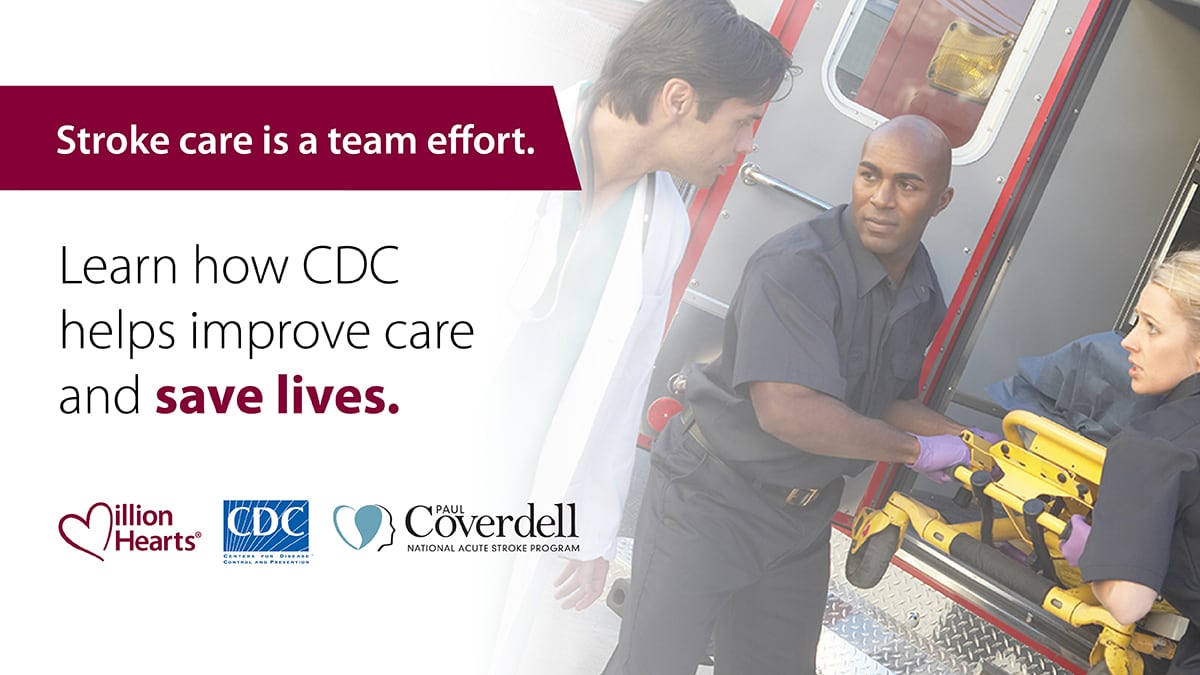
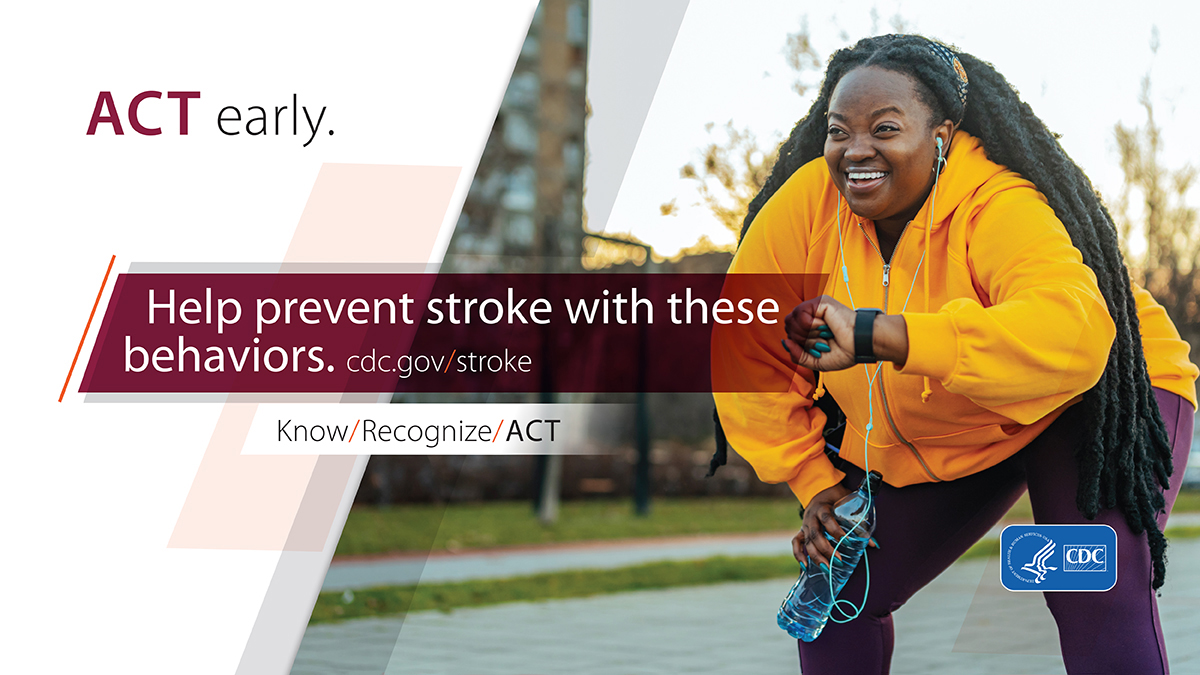
Boost your network: connect with us
LinkedIn: Connect with other health care professionals and share the latest in cardiovascular health from the Million Hearts® LinkedIn page.
X (Twitter): Follow @CDCHeart_Stroke and @MillionHeartsUS on Twitter to share our stroke tweets directly on your pages.
Facebook: Share stroke posts and resources directly from Million Hearts® on Facebook.
Resources
Hypertension in Pregnancy Change Package: Outpatient clinical settings can use this guide from Million Hearts® to put systems in place to improve the care they provide for women with hypertension in pregnancy.
Emergency Medical Services (EMS) Home Rule State Law Fact Sheet: Policymakers, public health professionals, and researchers can use this resource to understand challenges of local governments in providing lifesaving EMS.
Surveillance and Evaluation Data Resource Guide: Program managers and evaluators can use this at-a-glance compilation of data sources to develop their own programs for preventing heart disease and stroke.
Stroke Systems of Care Framework: Health departments can use this framework to establish stroke systems of care in their states and communities.
Paul Coverdell National Acute Stroke Program: Through the Coverdell Program, CDC provides funding and support to state health departments to track and measure acute stroke care and improve the quality of care.
Heart Disease and Stroke Maps and Data: Use these tools and resources for heart disease and stroke information, including data, trends, and maps.
Stroke Systems of Care: Policy Evidence Assessment Report (PEARs): These PEARs assess the best available evidence for seven policy interventions to improve pre-hospital, hospital, and post-hospital stroke care.
- National Center for Health Statistics. Multiple cause of death 2018–2021 on CDC WONDER Database. Accessed February 2, 2023.
